Namibia’s Four Rivers Route: Safari by Water
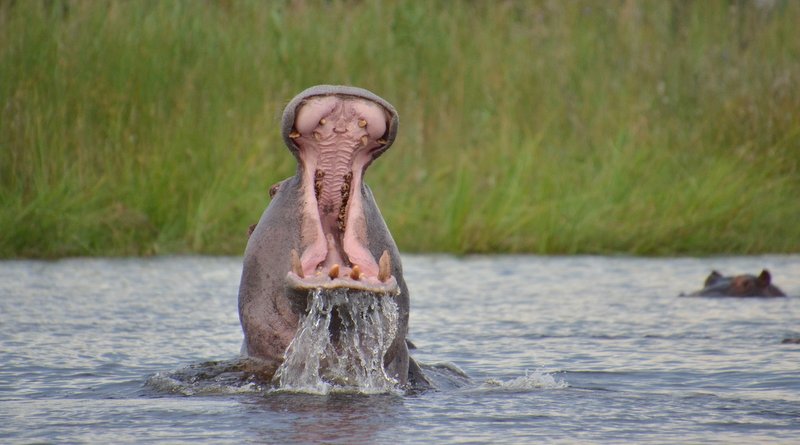
The Zambezi River, seven steps from the foot of my bed. I could have thrown a rock and hit Zambia on the other side, it’s so close. The water flowing past my riverside cabin would eventually tumble over Victoria Falls, a day trip from here. I had 10 days in Namibia focused on the rivers of the Caprivi Strip, the narrow 280-mile-long protrusion of territory that extends from Namibia’s northeasternmost corner and borders Angola, Zambia and Botswana. This series of safari stops is known as the Four Rivers Route, touching on the Zambezi, Okavango, Kwando and Chobe Rivers, and home to elephants, zebras, giraffes, hippos and crocodiles, plus over 400 species of birds (see my Zambezi birds gallery). Commuting villagers and fishermen share the waters with hippos and crocodiles, the occasional otter and crossing elephants who pay no heed to park boundaries or even international borders.
Namibia slips under the radar a bit. Only finally gaining its independence in 1990, it’s the quiet neighbor of South Africa and Angola that doesn’t make headline news for political drama. A former German colony, Namibia’s roadways are direct and well maintained, making this nation the perfect African destination for independent travelers. Known for its Skeleton Coast – the Atlantic shoreline land of dunes, shipwrecks, seal colonies, and surprising desert animals – and Etosha– a National Park in the Kalahari Basin comparable to the classic African safari destinations of Krueger or the Masai Mara – Namibia has protected nearly 38% of its land. Much of what falls outside those boundaries is nevertheless natural and sweeping to the horizon. The human population is just north of two million, roughly half that of the city of Los Angeles, but in an area the size of two Californias.

School children, making their long walk home in smart uniforms, waved at us as we passed them along the roadside. Baboons stared back at us a few miles later. The occasional hornbill glided from one side to the other. Visitors have the option to skip the long drive from Windhoek and fly in on a chartered flight or better yet, a bush plane with the added bonus of getting a bird’s-eye view of the unusual inland Okavango Delta in Botswana. Our driver and guide Rusten delivered us from the regional airport to a boat to reach Zambezi Mubala Lodge. With a welcome drink in hand, I listened to my options: boat excursions in search of crocodiles, fishing for the long-fighting and fast-running tigerfish, hikes into the grassy area around us to spy exotic bird species. In the evening a sundowner cruise, and a wild-game feast in the open-air followed by drinks around a fire.
* * *

Much like the waters here, this itinerary is ever flowing. Three nights later, I was in a different bed on a different river. A loud guttural grunting, deep from a cavernous throat, ripped me from my dreams in the middle of the night. I was fight-or-flight awake and my brain gathered itself enough to remind me I was in Namibia and I had just heard a hippo outside my door. Comforted by the fact that hippos can’t climb deck poles, I grabbed my phone to try to capture its call on audio. It had sounded so close. I stood in the dark at my screen door, the earthly world as black as oil yet the sky showing a riot of stars. I listened to the waters of the Kwando River slipping through the reeds along the bank; I could almost feel it. The high grunt and then the low grunting pattern like the evil laugh of a villain, like Jabba the Hut. I nearly dropped the phone at the sudden volume of it; the hippo wallowed right under the edge of my deck. I listen to it roll a bit in the water, the rippling along its invisible hulk, the wake slapping against the banks. But after a lengthy silence, I knew it had moved on.
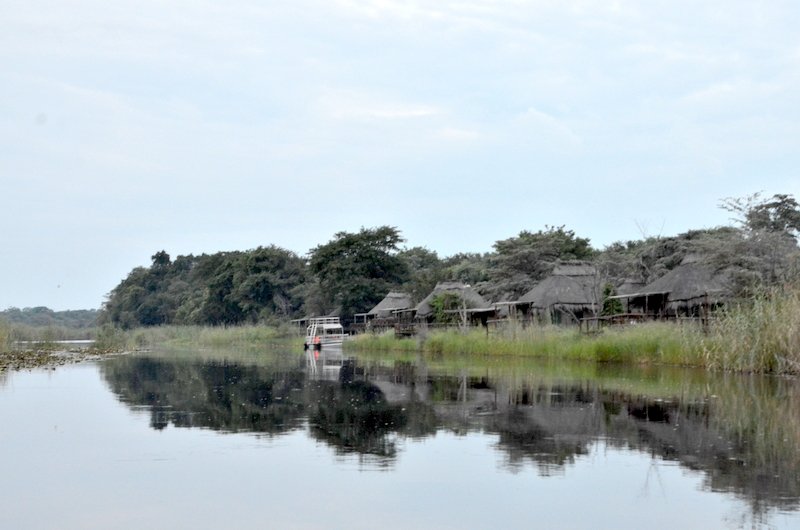
Camp Kwando was the most rustic of my stays, no air-con, screened windows letting in the night sounds, revealing the orchestral maneuvers of the insect world, water birds, and even a distant lion’s roar. Not to mention the hippo at the door.
If one of the massive trees rising above the wooden decks at the lodge were to fall over the narrow river, it’d land in Botswana. During lunch armed soldiers emerged from the tall grass across the water. A tourist at our table expressed alarm that they had their guns pointed in our direction, but they gathered around a GPS device and clearly engaged in duties of border and, no doubt, poacher patrol. They waved to the restaurant and several of us seized the opportunity to hop on the boat with the staff person who delivered some lunch to them on the other side. My first unofficial step on Botswanan soil.

The next day on an aluminum boat with an outboard motor, I headed upstream with a group to find a bloat of 30 hippos along a bend in the river. They stood on the river bottom, all of them staring, only their eyes and those amusing tiny cup ears above the waterline. Our guide wedged the boat into a grassy area along the bank and I wondered how long it’d take him to back it up if one of the males decided he’d like to come over and flip us. The closest snorted at us 25 feet away. Another suddenly rose up out of the river, mouth wide to show some broken and rotten teeth. This is the deadliest mammal mouth in Africa. Lions? Less than 100 people per year fall to the king of the jungle. Hippos – territorial, sharp-toothed, and weighing in at 3,300 lbs – kill more than 500.

We lingered long, the light shifting to pink, clouds glowing on the water, and then turned back for the lodge. That’s when we came across two male elephants in a skirmish over who’s in charge. Tusks clattered and trunks tangled as they threw their weight against each other. The leathery ears rippled and stretched as they faced off. We all laughed as one elephant broke off to get some grub and came back to the fight with a mouthful of greens, not even pausing as he released a previous meal in the other direction. We motored along in the half-light from there, passing the occasional bobbing head of a hippo and at one point following a couple of elephants, still wet from a crossing swim, as they ran along the bank as if we had caught them slipping into Namibia without their passports.
* * *
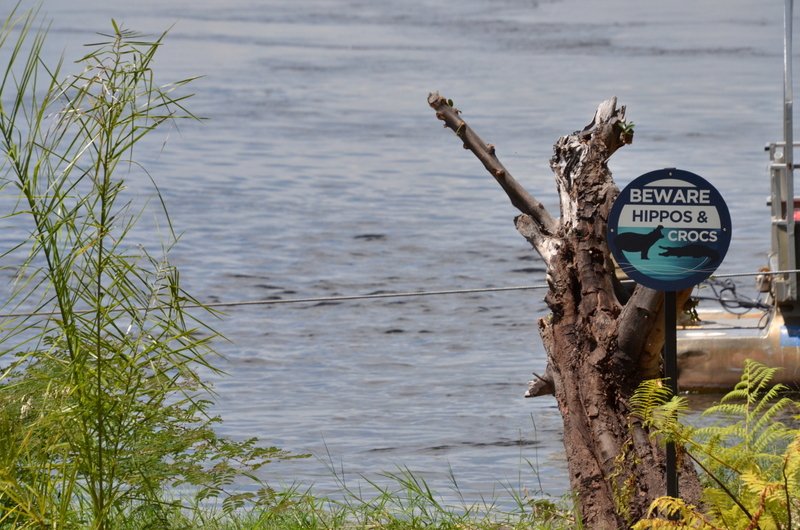
“Like this.” The grounds manager at Divava Okavango Resort & Spa clicked his tongue in demonstration, then nodded to me. I failed miserably, producing a weak ‘tsk’ more cluck than click, appropriate for a disapproving mother. He laughed, not unkindly, and repeated the phrase in Damara/Nama, one of the “click” languages, spoken in Namibia. “’Matisa omes – how are you, brother?’” “’!gai-ge a – I’m OK, thank you.’” He tested me whenever he saw me over the next few days.
In stores, in villages, at roadside stops, friendliness was the norm. Smiles came easy. Say thank you and Namibians reply “Pleasure.” Pop music resembled the South African pop of Juluka, a positive, uplifting vibe, like reggae with a bit more get up and go.

Guides Rusten and Johanna became friends early in the journey, and Johanna shared stories and details about her family and her life. As Rusten drove he spoke to me about anything from politics and poverty to bird species and the local beers. One afternoon I joined them as they slipped into town on some errands and we ended up at a shebeen, a zinc-roof-and-cinderblock juke joint where we tipped back a couple of Windhoek Lagers and dropped some change on the bar for the bartender to summon up a couple of local songs on a jury-rigged sort of CD jukebox. We sat at a table outside, and a couple staff from the resort flashed bemused smiles at us as they stopped in for a quitting-time meal in the kitchen next door. Functioning as road and parking lot, a washboard-surface of packed dirt lay amid the haphazard scattering of buildings. Smoke in the air originated with a couple people processing hides across from us. Another shebeen featured a competing sound system and, curiously, a car wash. A common combo for drinking establishments, I was told.
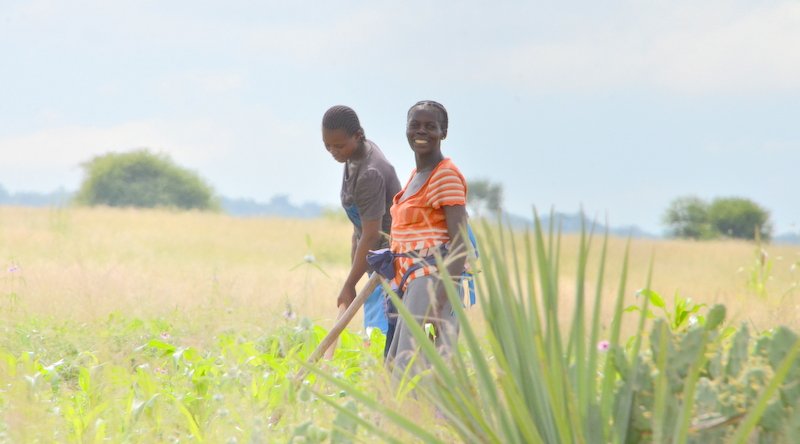
I joined a tour of a village outside the lodge. Our guide, a resident, walked our group through daily life. A poor life, to be sure, but not a sad one. Clouds gathered and let slip a light rain, so the villagers gathered under a tree and began singing and drumming, forming a dance circle. Not a shuffle or a measured step, but the leaping and stomping of letting loose, smiles wide on their faces as they took turns at center. This wasn’t a hotel floor show. They finished and we thanked them, wandering deeper into the village with our guide. As soon as we were out of sight, they started singing again off in the distance, for themselves, for the love of it.

Toward evening, as I dined on the deck overlooking the Okavango River, I could hear the cascading Popa Falls nearby, and off in the distance a cluster of gray rocks became a bloat of hippos through binoculars. Farther upriver crocodiles commonly sunned themselves. A row of expansive thatch-roofed rooms set along a tree-covered slope to the water offered tubs looking out to the river and an outdoor shower. As I returned to my room that night, I struck up a conversation with a German couple who had been coming to Africa for years, specifically to Namibia for the last six. “Botswana is too expensive now. And so many people.” I believe she meant “tourists” because I couldn’t get enough of the locals.
* * *

In between the lodge stays, we have a couple land-based game drives through national parks but at the end of each day, we retreat back to the banks of a river. It’s the last evening on the last river: Hakusembe River Lodge. The previous day’s sundowner cruise put is nearly arm’s length from a variety of species perched and posing for the cameras. Giant Kingfishers, African Darts, various Herons. We sipped champagne for sunset and returned to the beach where the entire staff of the resort greeted us in song and drum beats next to a fire. But that day it’d been raining on and off, the sky low and leaden, the chill enough for a windbreaker. Sunset seemed unlikely, but I went the full mile and booked the sundowner anyway. More birds, a pause to hop off the boat in Angola just to say we’d done it.

The boat turned around to head back and magic happened. The horizon opened up in a golden crack, and marmalade warmth began to spread from the west. The smooth water mimicked it until the light had spread even overhead and the whole world appeared as if through a filter. Highlights turned and bloomed, and then the sky to the east took up the color as well, until sunset simply went over the top and sent up part of a rainbow behind us.

An experience a camera can’t fully capture, and followed by a singing and dancing welcome from the entire staff as our boat slid up onto the sands before the lodge. I stepped out onto the beach, , and much as the color had unexpectedly filled the sky, so did my own spirit swell with the pure joy of this song they were singing. This right here. This is Namibia.
__________________________________________________
Whether you are self-driving, camping, or glamping, Blue Crane Safaris offers this multi-river trip, coordinating all transportation, bush plane fly-ins, and guides, and booking lodging with Gondwana Collection along the way.
See my photo gallery of some of the birds I spotted on this safari trip.

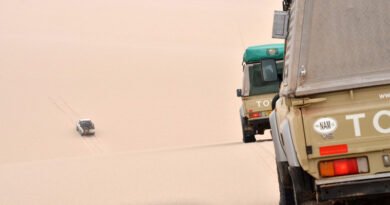

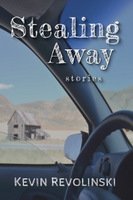 ORDER YOUR COPY TODAY!
ORDER YOUR COPY TODAY!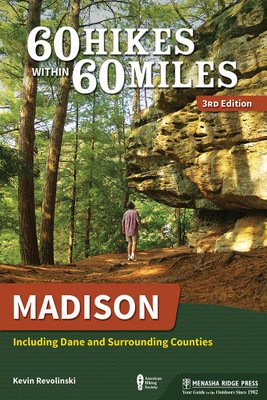 ORDER YOUR COPY TODAY!
ORDER YOUR COPY TODAY!
Pingback: Birds of the Zambezi Region of Namibia - The Mad Traveler